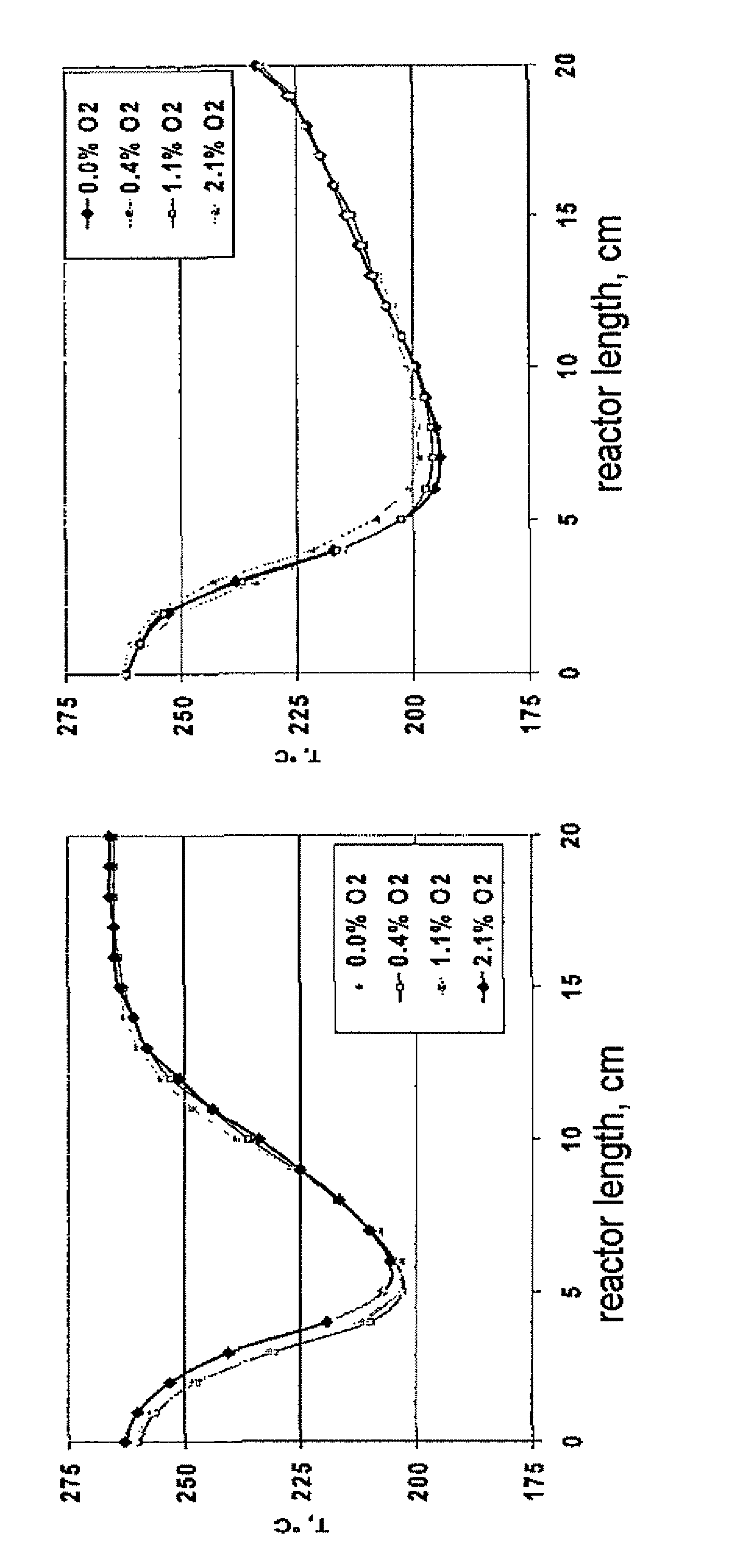Dehydrogenation process
a dehydrogenation process and process technology, applied in the field of dehydrogenation process, can solve the problems of catalyst deactivation and blockage of reactive centers, and achieve the effect of increasing life, reducing the loss of yield, and improving the selectivity
- Summary
- Abstract
- Description
- Claims
- Application Information
AI Technical Summary
Benefits of technology
Problems solved by technology
Method used
Image
Examples
example
[0106]A 0.9% Pd / ZrO2 catalyst which was prepared by impregnating 3 mm ZrO2 extrudates with a Pd(NO3)2 solution was investigated for its activity with respect to the 3-methylpiperidine (3-MPIP) dehydrogenation to 3-picoline (3-PIC) in a tubular reactor having an internal diameter of 26 mm. For this purpose 50 ml of the catalyst material was initially taken and was activated for 4 h at 80° C. in a 20% by volume H2 (in N2) atmosphere and then at 200° C. under pure H2 for 3 h. The 3-MPIP metering was then started. For the 3-MPIP metering, from 30 to 120 ml / h of the starting material were passed into an evaporator and completely vaporized into a carrier gas stream. The carrier gas consisted of 20% per volume of H2, 0-10% by volume of air and 70-80% by volume of N2. The total volume flow rate of the carrier gas corresponded to 20 l / h. The gaseous mixture of starting materials was passed over the catalyst bed after the evaporator. The dehydrogenation was carried out at 265° C. and atmosphe...
PUM
| Property | Measurement | Unit |
|---|---|---|
| temperature | aaaaa | aaaaa |
| temperature | aaaaa | aaaaa |
| temperature | aaaaa | aaaaa |
Abstract
Description
Claims
Application Information
 Login to View More
Login to View More - R&D
- Intellectual Property
- Life Sciences
- Materials
- Tech Scout
- Unparalleled Data Quality
- Higher Quality Content
- 60% Fewer Hallucinations
Browse by: Latest US Patents, China's latest patents, Technical Efficacy Thesaurus, Application Domain, Technology Topic, Popular Technical Reports.
© 2025 PatSnap. All rights reserved.Legal|Privacy policy|Modern Slavery Act Transparency Statement|Sitemap|About US| Contact US: help@patsnap.com

